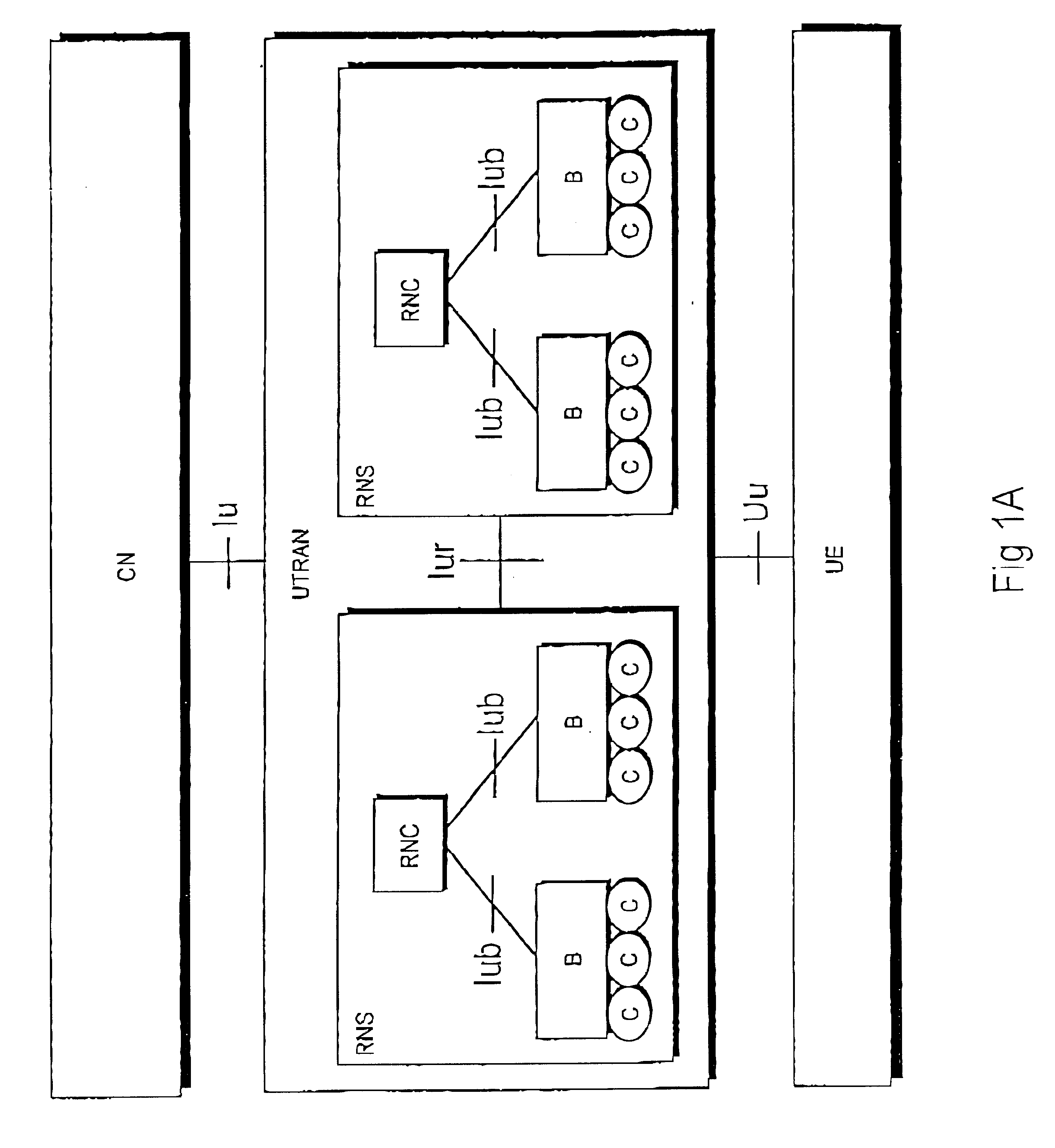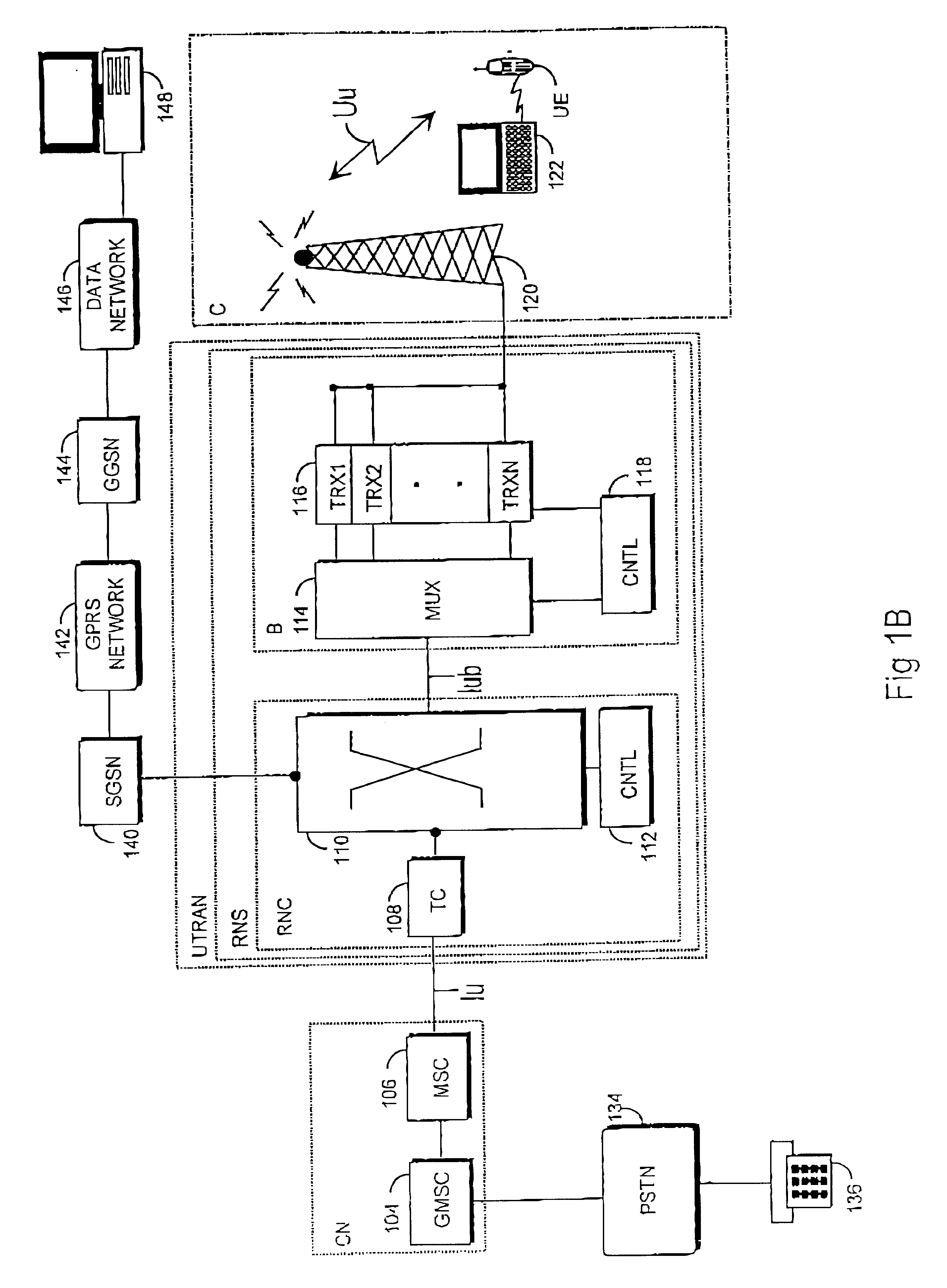Rake receiver
a receiver and antenna technology, applied in the field of radio systems, can solve the problems of high-power interference sources, inability to separate multipath propagated signal components, and interference of each antenna
- Summary
- Abstract
- Description
- Claims
- Application Information
AI Technical Summary
Problems solved by technology
Method used
Image
Examples
Embodiment Construction
In the following examples, embodiments of the invention are described in the Universal Mobile Telephone System (UMTS) without restricting the invention to it.
The structure of a universal mobile telephone system is explained referring to FIGS. 1A and 1B. FIG. 1B comprises only the blocks that are essential for the description of the invention, but it is obvious to one skilled in the art that a conventional mobile telephone system also comprises other functions and structures, which need not be explained here in more detail. The main parts of a mobile telephone system are a Core Network CN, a UMTS terrestrial radio access network UTRAN and User Equipment UE. The interface between the CN and the UTRAN is called Iu and the air interface between the UTRAN and the UE is called Uu.
The UTRAN comprises Radio Network Subsystems RNS. The interface between the RNSs is called lur. An RNS comprises a Radio Network Controller RNC and one or more nodes B. The interface between the RNC and B is call...
PUM
 Login to View More
Login to View More Abstract
Description
Claims
Application Information
 Login to View More
Login to View More - R&D
- Intellectual Property
- Life Sciences
- Materials
- Tech Scout
- Unparalleled Data Quality
- Higher Quality Content
- 60% Fewer Hallucinations
Browse by: Latest US Patents, China's latest patents, Technical Efficacy Thesaurus, Application Domain, Technology Topic, Popular Technical Reports.
© 2025 PatSnap. All rights reserved.Legal|Privacy policy|Modern Slavery Act Transparency Statement|Sitemap|About US| Contact US: help@patsnap.com



